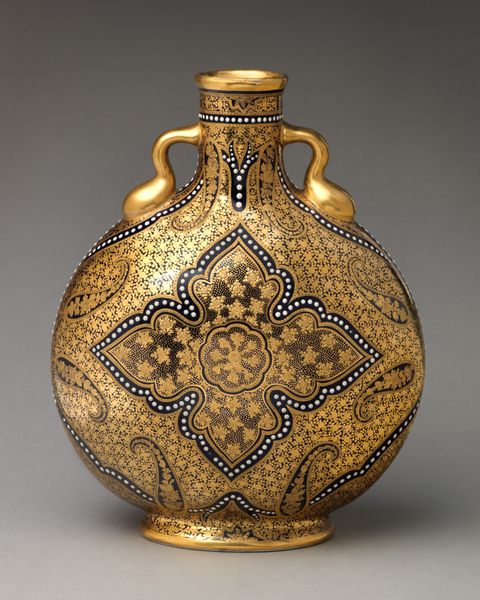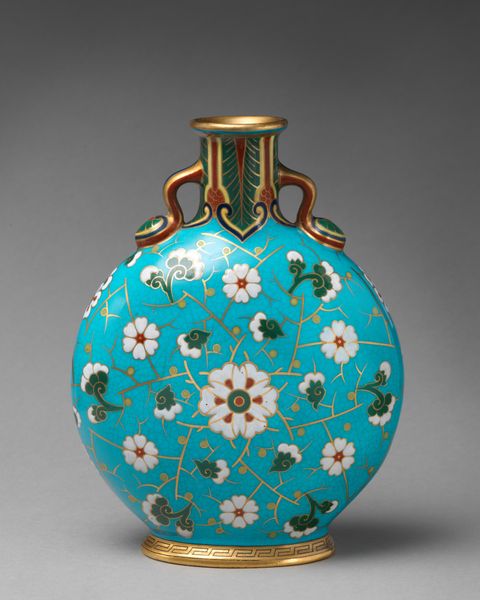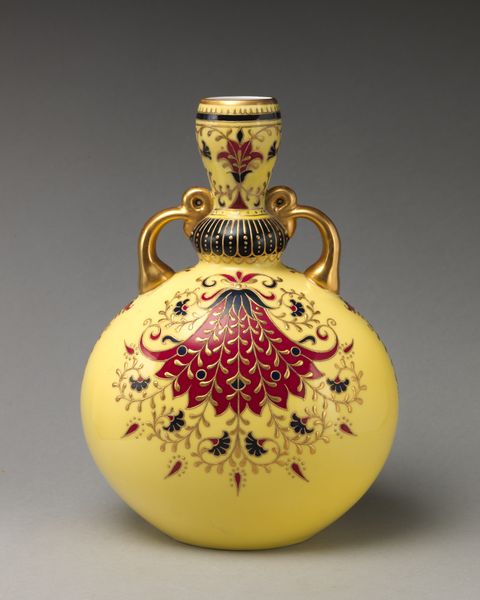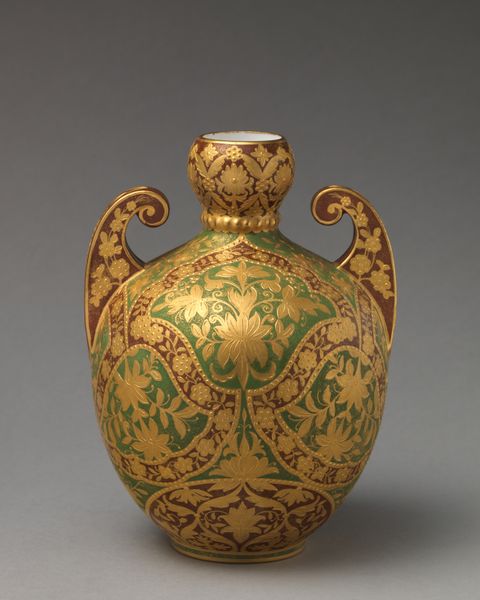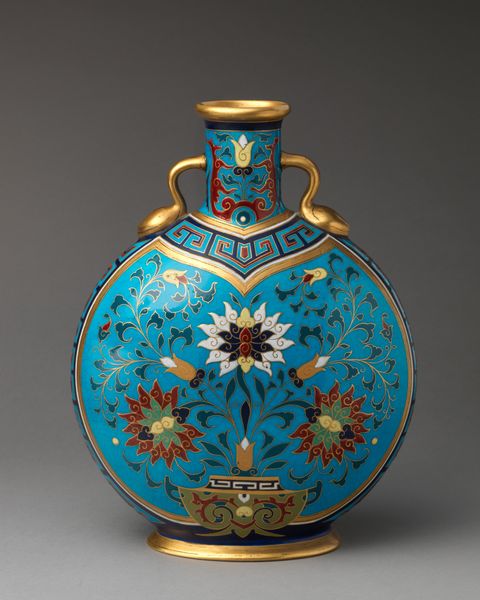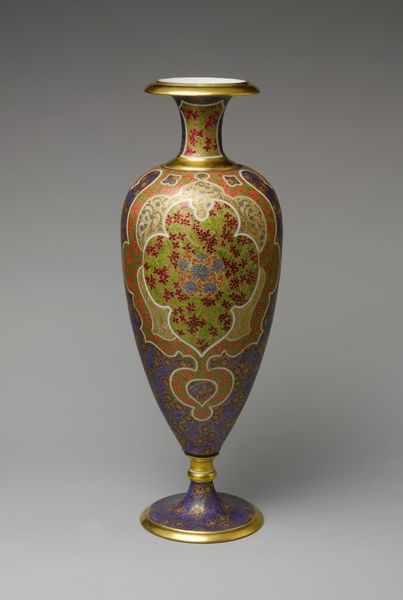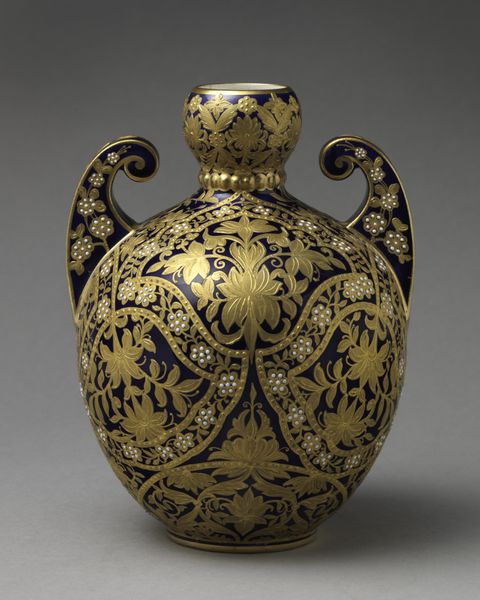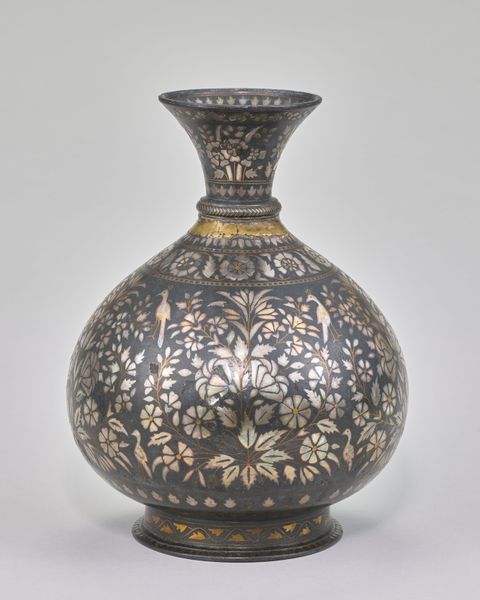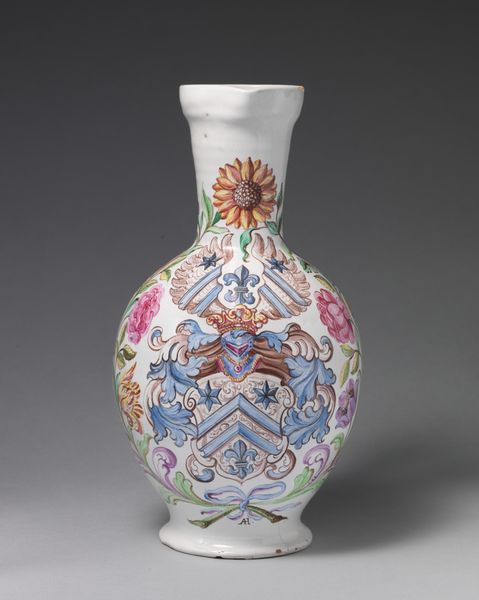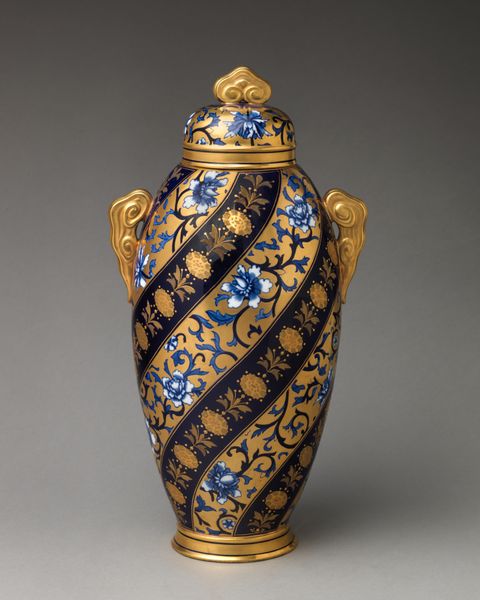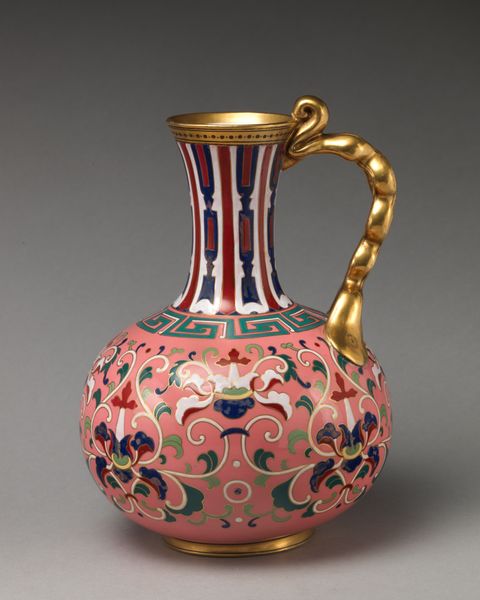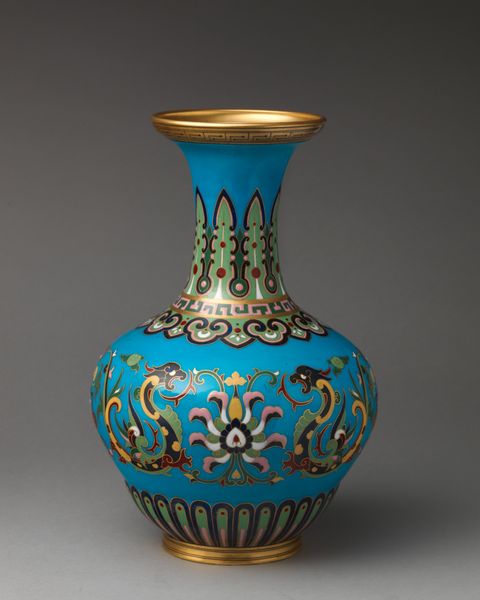
porcelain, sculpture
#
porcelain
#
sculpture
#
islamic-art
#
decorative-art
Dimensions: confirmed: 10 7/16 × 8 7/16 × 4 5/8 in. (26.5 × 21.4 × 11.7 cm)
Copyright: Public Domain
Curator: This object is a moon flask with paisley motif, made from porcelain sometime between 1870 and 1880. The maker is Coalport, and you can find it here at the Metropolitan Museum of Art. What's your first impression? Editor: Well, immediately, it reminds me of a dream I once had after eating too much Indian food—vibrant, swirling, and intensely patterned. It’s somehow both comforting and slightly overwhelming. Curator: It’s fascinating how decorative arts from this period actively embraced cross-cultural references and manufacturing techniques. The paisley design, originating in Persia and India, became a prominent motif in European textiles and decorative objects due to increased trade. Coalport, and other porcelain factories, developed transfer printing, which allowed for detailed, repetitive patterns, reflecting mass production and the aesthetic taste for complex ornament. Editor: You know, hearing you describe the process makes me think about the anonymous hands involved. Each paisley element feels so meticulously rendered, and thinking about them reproduced over and over... it's kind of hypnotic. Almost as if the piece absorbed something of the collective energy of its making. It seems odd that it could also then reflect *mass* production in its design. Curator: That is exactly it! The duality inherent to the Industrial Revolution. Machines doing some of the steps, artisans then doing painstaking labor over those pieces. Note the handles. How would those be affixed to a molded flask shape like that? Likely attached with slip—more human effort—and glazed for visual and functional harmony. I think the choice of porcelain itself reflects a certain striving for status and luxury through trade, class, and industry, as this particular choice in material requires refinement and great skill, being very expensive to produce during this period, because only Europe’s elite could obtain this material before mass manufacturing was refined. Editor: It definitely has that opulent feel. The paisley dances in all that golden glaze, creating that impression of luxurious indulgence, even though the base object has a clear form that gives the wildness a little bit of grounding. It is contained explosion. What are your final thoughts? Curator: Ultimately, the flask synthesizes so many complex issues surrounding design, production, and consumption in the late 19th century. It prompts us to think about the role of industry in creating both cultural exchange and aesthetic tension. Editor: And for me, it’s a reminder that even objects born from complex industrial processes can still carry the spark of human creativity, or perhaps even of human dreams.
Comments
No comments
Be the first to comment and join the conversation on the ultimate creative platform.
